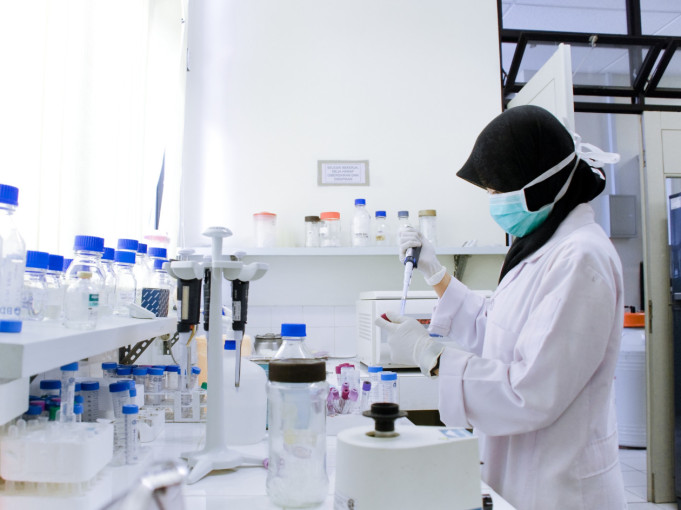
As a pioneering national university known for its excellence and innovation, UGM continues to encourage its researchers to be productive in generating scientific works and innovative products that benefit society.
Increasing researchers’ awareness of the need to protect their research results through intellectual property (IP) protection is also necessary. UGM, through the Directorate of Research, continually implements IP awareness programs, including general IP and its various branches, such as patents, copyrights, trademarks, and industrial designs.
Data shows that these awareness efforts have yielded significant results, with the number of UGM IP applications increasing from 256 in 2018 to 963 in 2024. This has also positively impacted the number of certified patents, totaling 330 by 2024.
To raise awareness and encourage researchers to protect their research and service outcomes with IP, the Directorate of Research held an Intellectual Property Protection Workshop titled “Protection of Intellectual Property of Research and Service Outcomes” on Thursday (May 16).
More than 400 participants, including UGM lecturers or researchers, non-teaching staff, alumni, and the general public, attended the online workshop conducted via Zoom.
Through this activity, Dr. Ratih Fitria Putri, Head of the UGM Subdirectorate of Scientific Publications and Intellectual Property at the Directorate of Research, expressed hope that the entire UGM academic community would understand the importance of registering their research outputs as IP through the university as a form of protection.
“Let’s advance IP at UGM and nationally for a more advanced and reliable Indonesia,” said Dr. Putri.
Before entering the material session, participants took a pre-test to gauge their understanding of basic IP concepts. Dr. Irna Nurhayati, a lecturer from the Business Law Department of the UGM Faculty of Law (Law UGM), delivered the first material session.
Irna discussed the new challenges in protecting intellectual rights, noting that research results can easily be copied, distributed, and modified without the inventor’s permission.
“There are many types of IP, and understanding these types is crucial for all academic members to minimize losses from theft and plagiarism practices,” Dr. Nurhayati explained.
She outlined that in addition to patents, IP ownership protected by law or the state includes copyrights, trademarks, industrial designs, geographical indications, trade secrets, integrated circuit layout designs (ICLD), and plant variety protection (PVP).
The protection system is divided into the constitutive system (first to file) and the declarative system (first to use).
“In the constitutive system, the party who first applies for registration will own the intellectual work, which is why it is called the first to file system,” explained Dr. Nurhayati.
She added that in the declarative system, even if the IP user has not applied for registration, the exclusive rights will automatically be granted to the first user (first to use) of the IP, provided it is publicly disclosed.
Dr. Herianto, a lecturer in the Department of Mechanical and Industrial Engineering at the UGM Faculty of Engineering (FT UGM), led the second session.
Dr. Herianto shared his experience registering IP for his research, including a 3D face shield as part of personal protective equipment (PPE) for medical use during the COVID-19 pandemic.
“Even though the research I conducted was more towards community service, I still registered it under UGM’s name to prevent the idea from being taken and commercialized by others,” he said.
Dr. Herianto explained that a single research output could be submitted for multiple IP protections, as each type of IP offers different protections. He also shared tips for constantly checking the patentability of a research idea to minimize the potential for rejection due to similarities with other researchers’ work.
According to him, the mindset of only preparing IP protection after completing a research project can be detrimental to researchers in terms of time and finances. When researchers want to patent their inventions, they may encounter obstacles due to existing patents.
“If no one has conducted similar research after checking, you can proceed with the research,” concluded Herianto.
In addition to regular IP protection awareness programs, UGM continues to conduct research downstream through the UGM Science Techno Park (STP UGM).
STP UGM’s downstream efforts align with national priority focuses, including health, integrated agriculture, new and renewable energy, manufacturing, engineering, information and communication technology (ICT), heritage, art, and culture sustainability management.
So far, UGM has successfully down streamed IP resulting from research and innovations, such as health tools and technologies, agro products, and digital products, including the GeNose C-19 COVID-19 screening tool, the INA-SHUNT hydrocephalus therapy device, the OST-D water-soluble vitamin D, the GAMA Cha halal-certified bone replacement material and bone filler, the NPC Strip G nasopharyngeal cancer detection kit, the Ceraspon post-surgery medical sponge, early landslide disaster detection tools, and digital radiography control devices.
Author: Triya Andriyani

